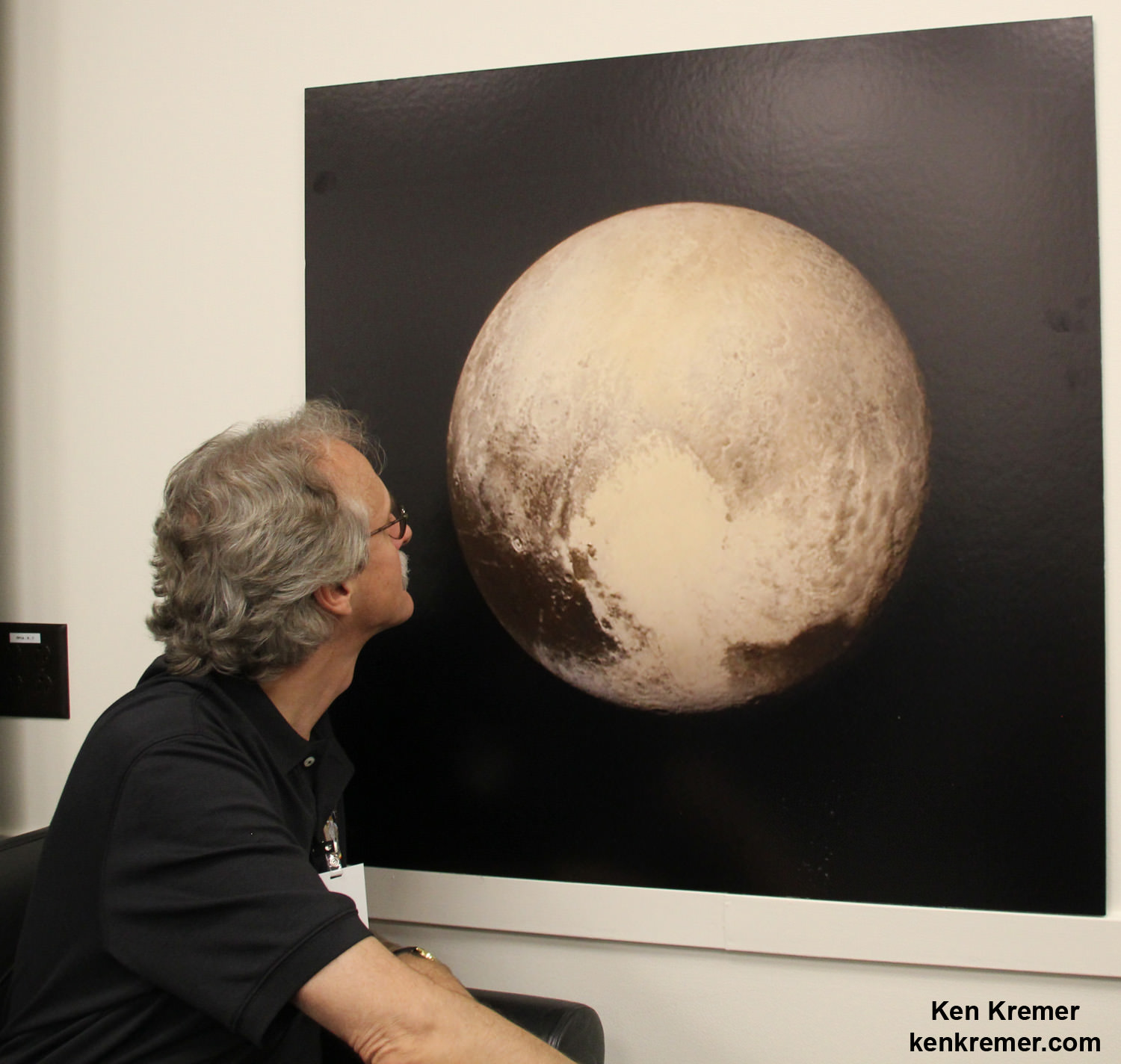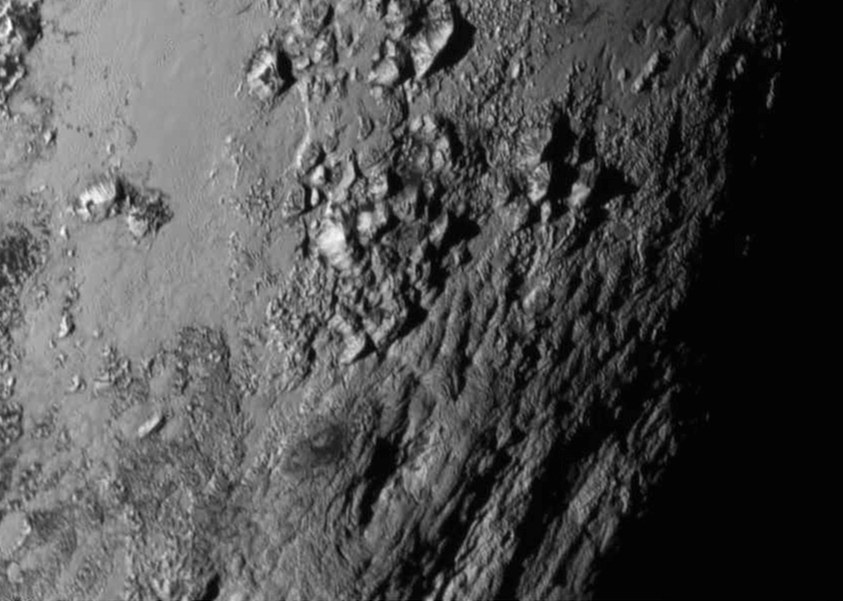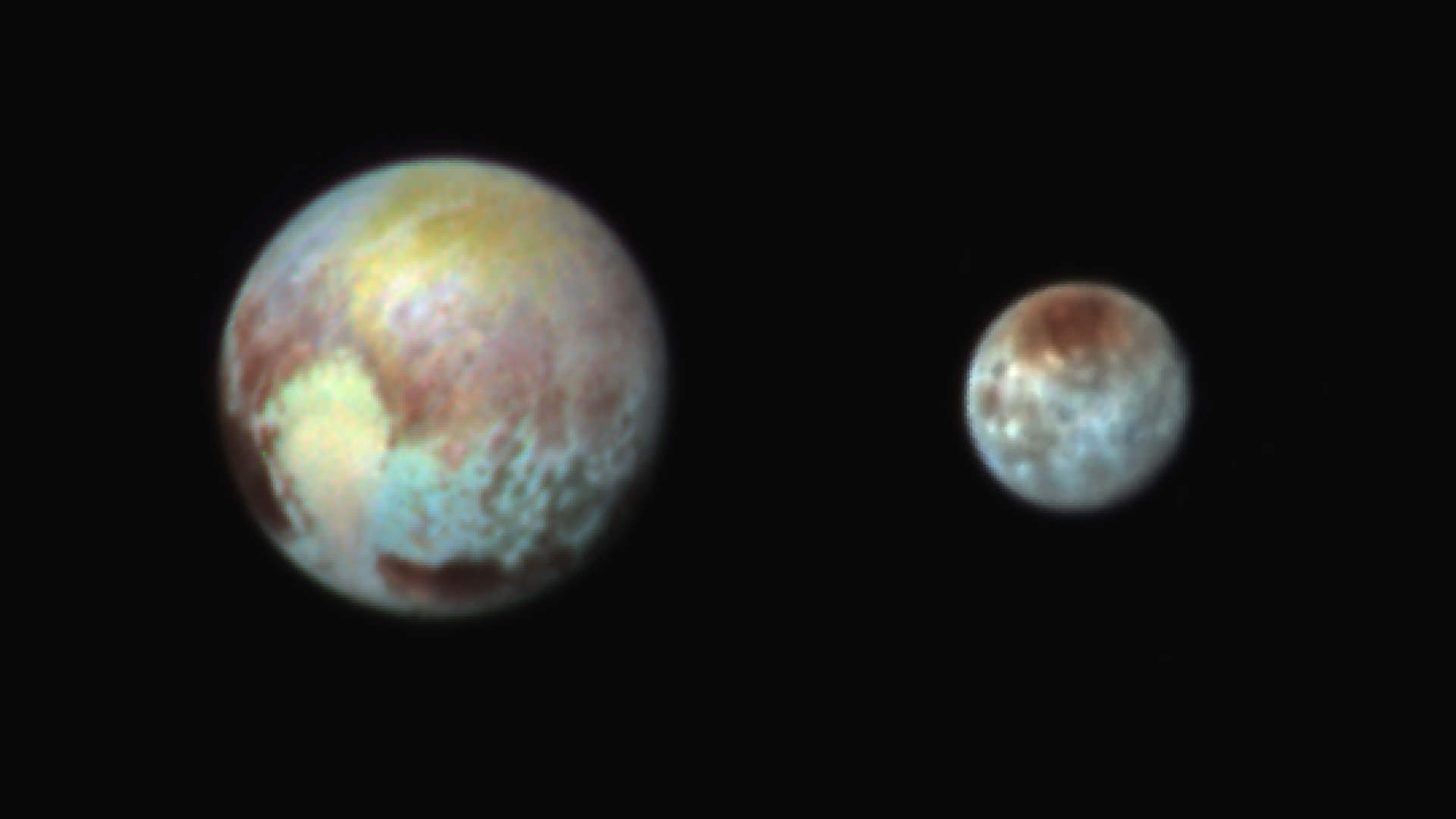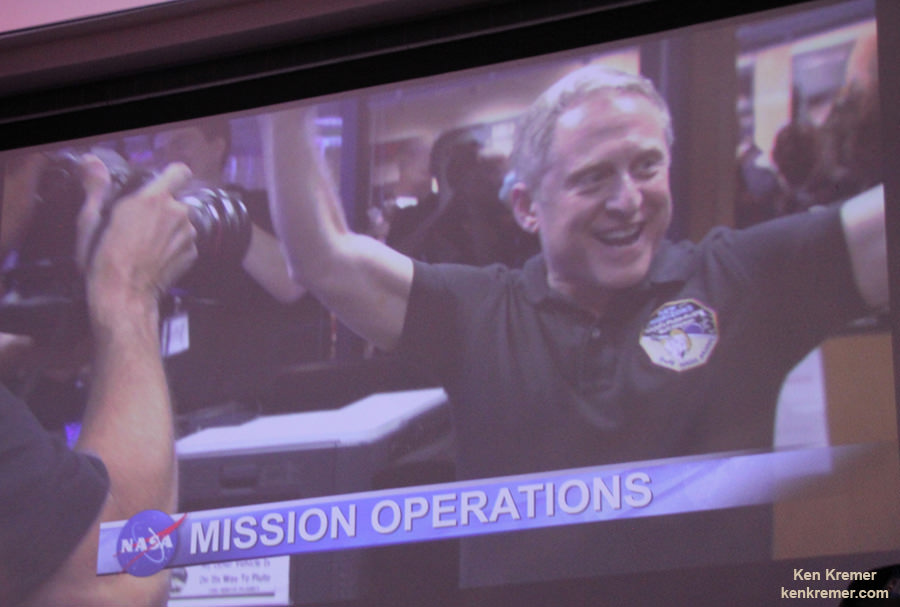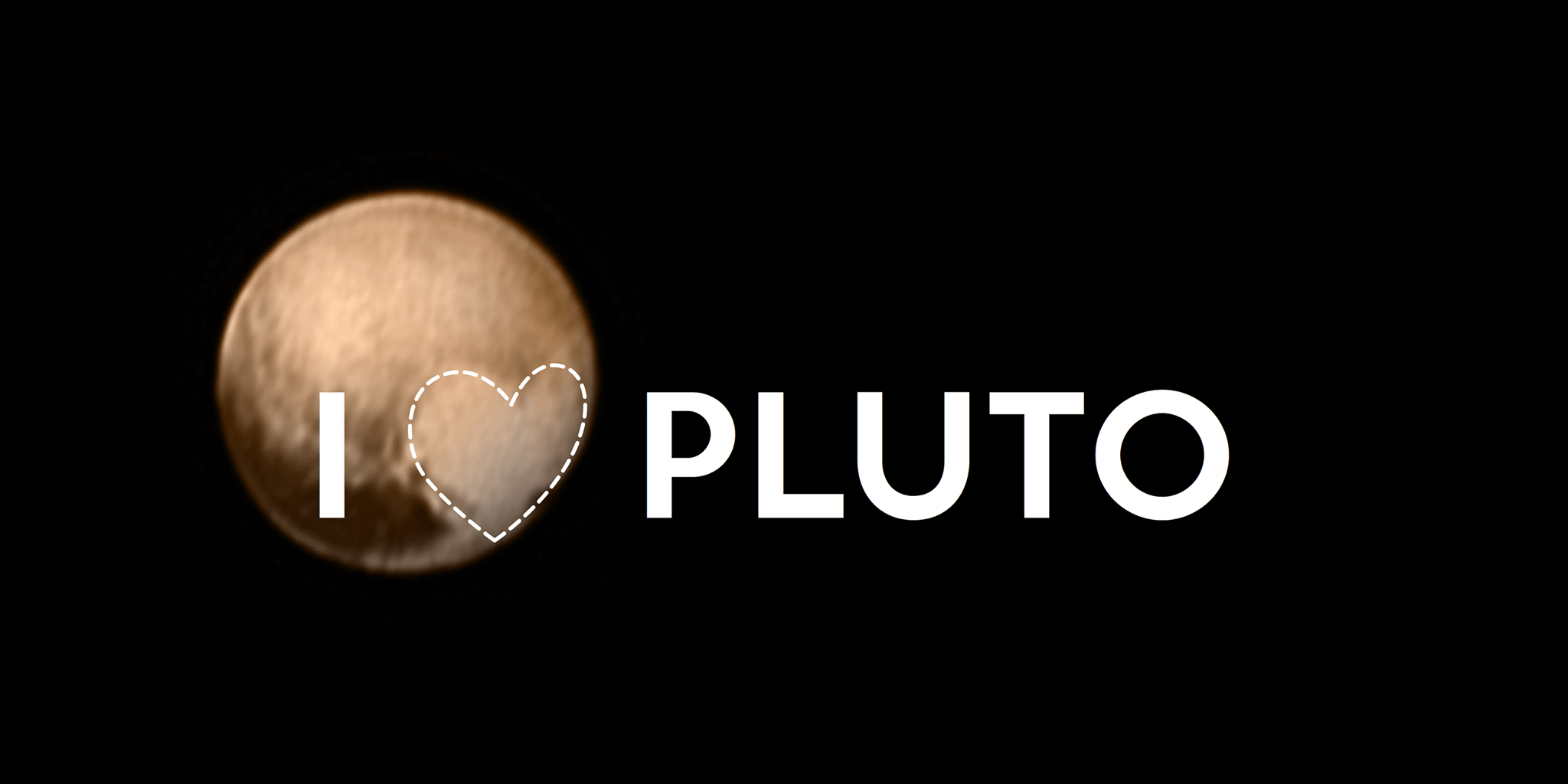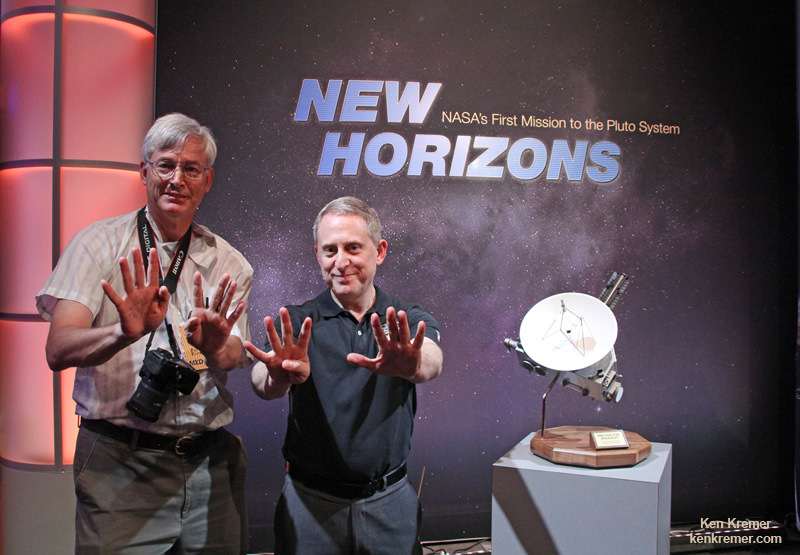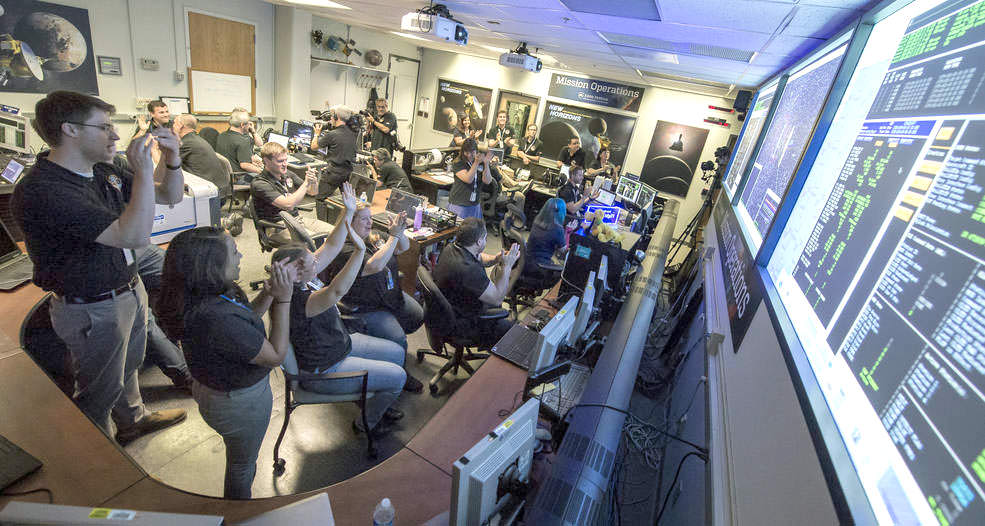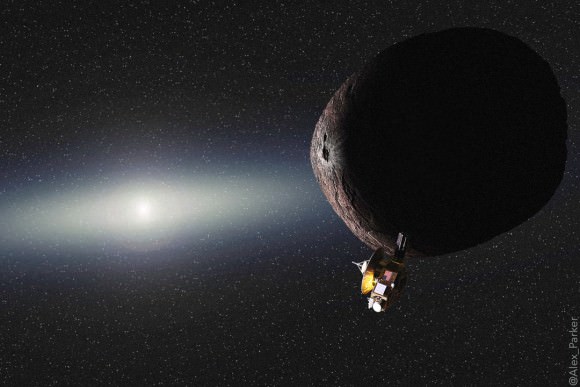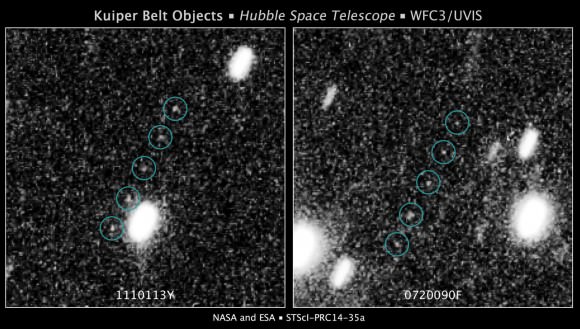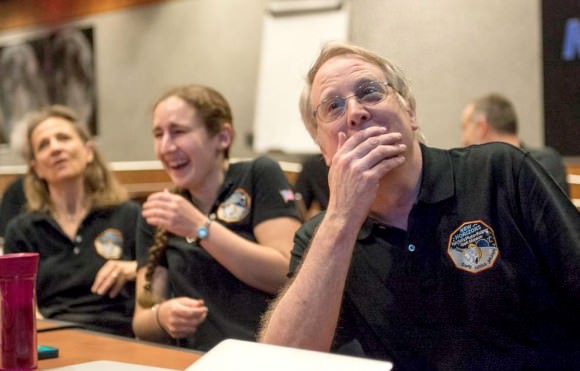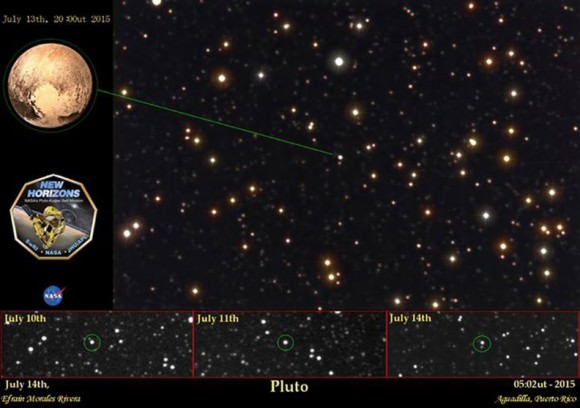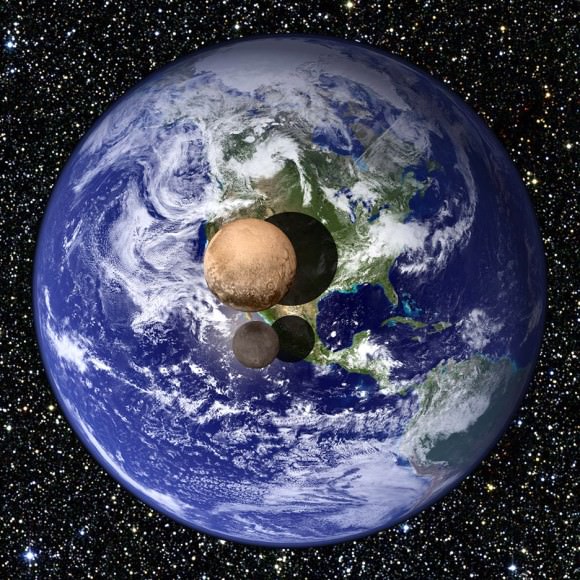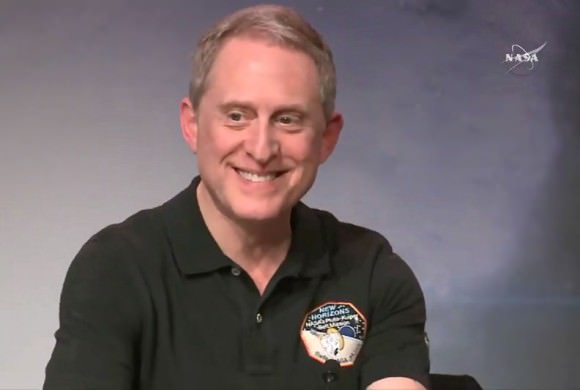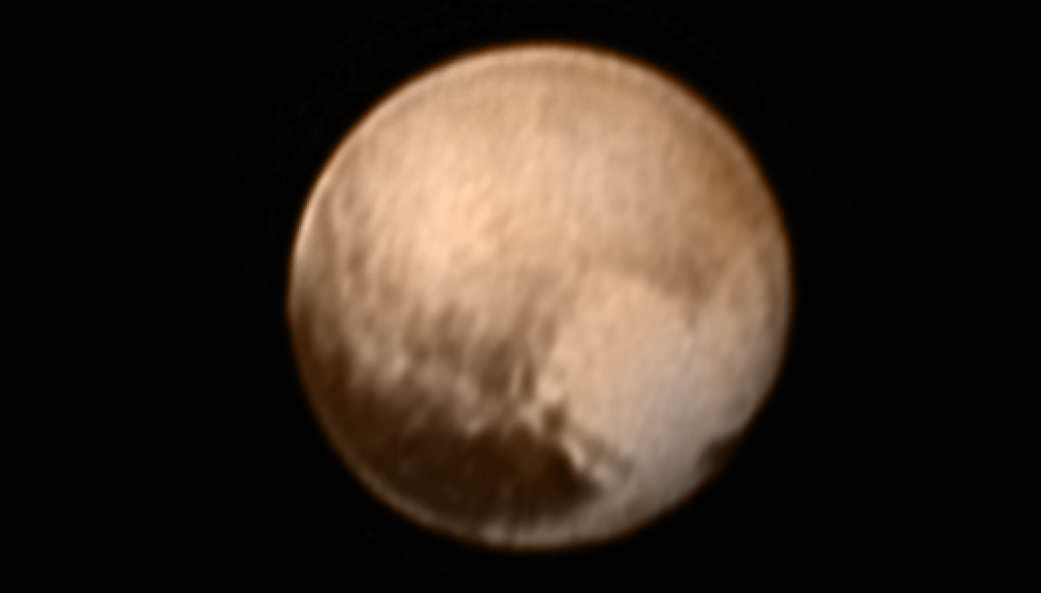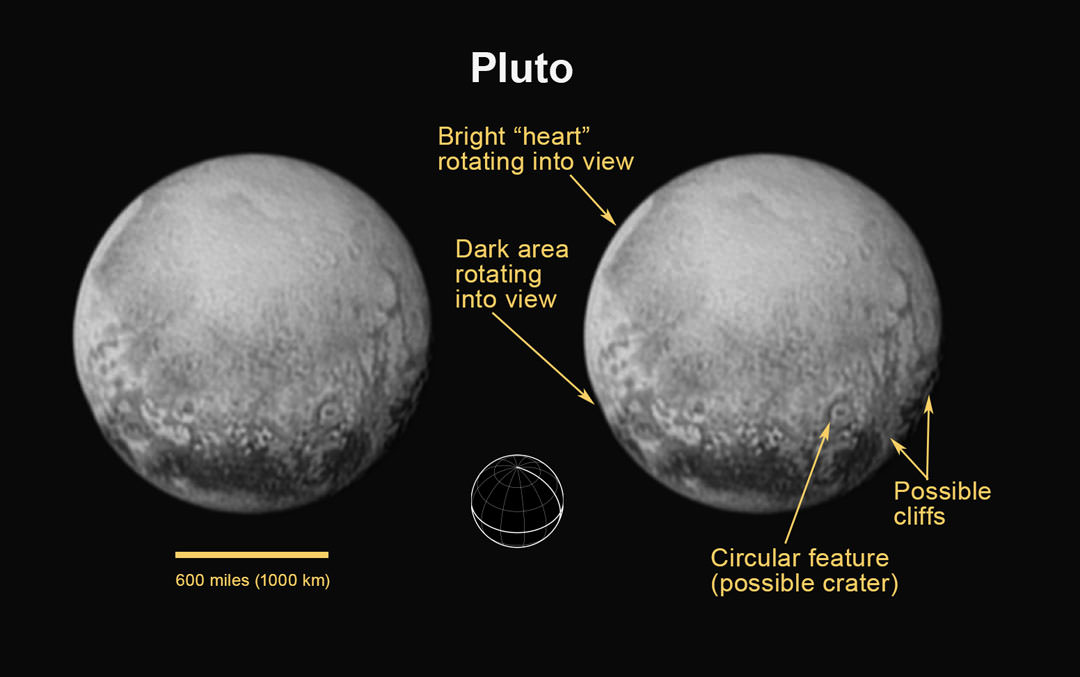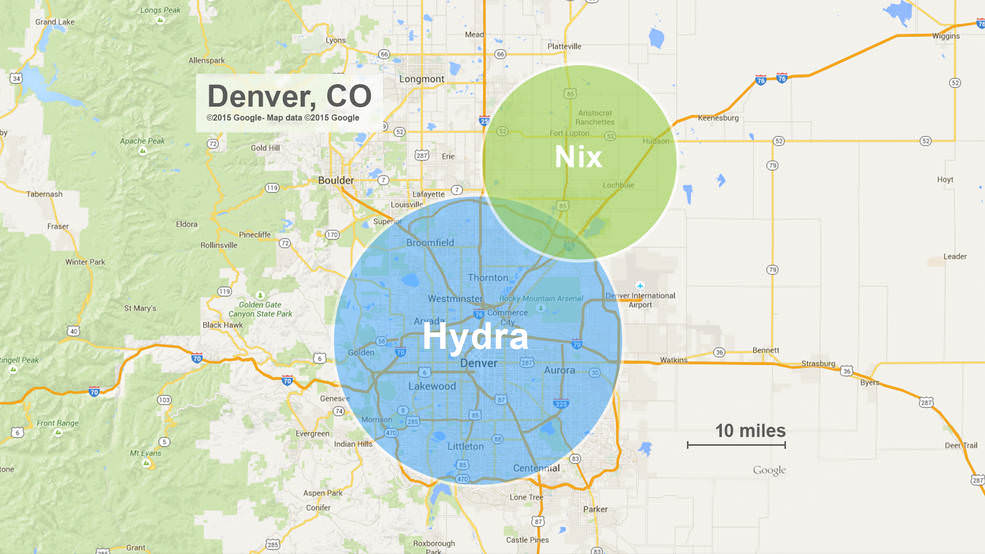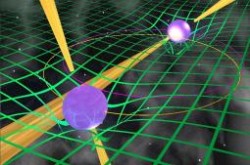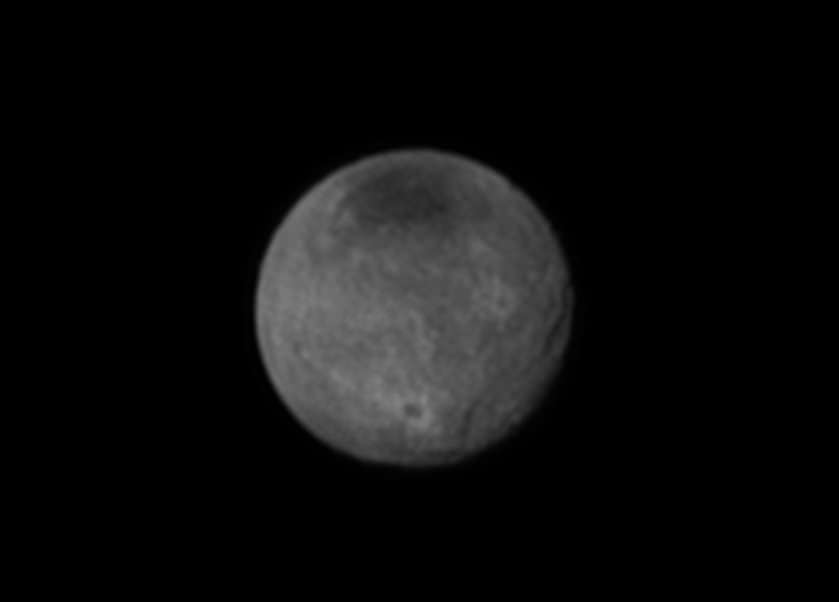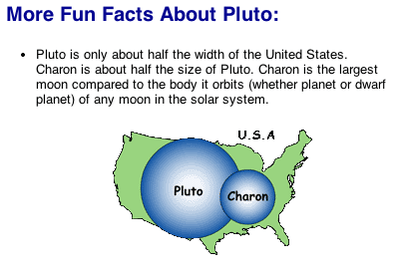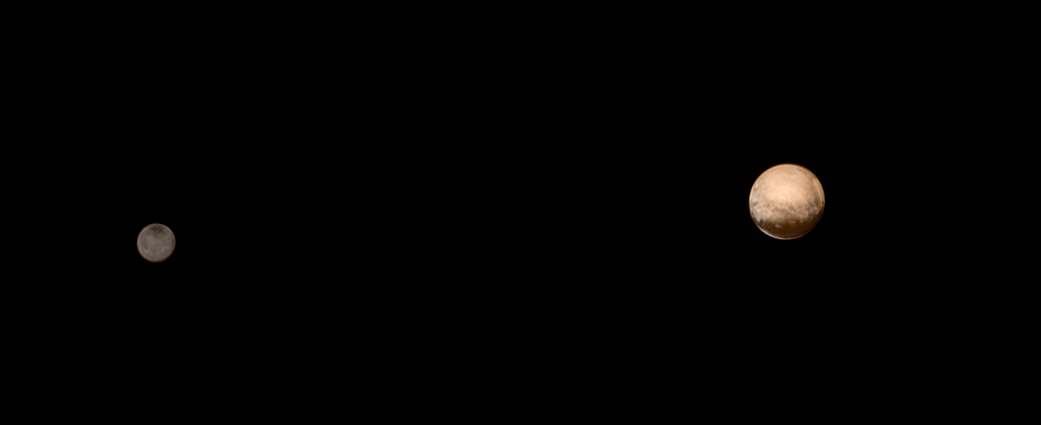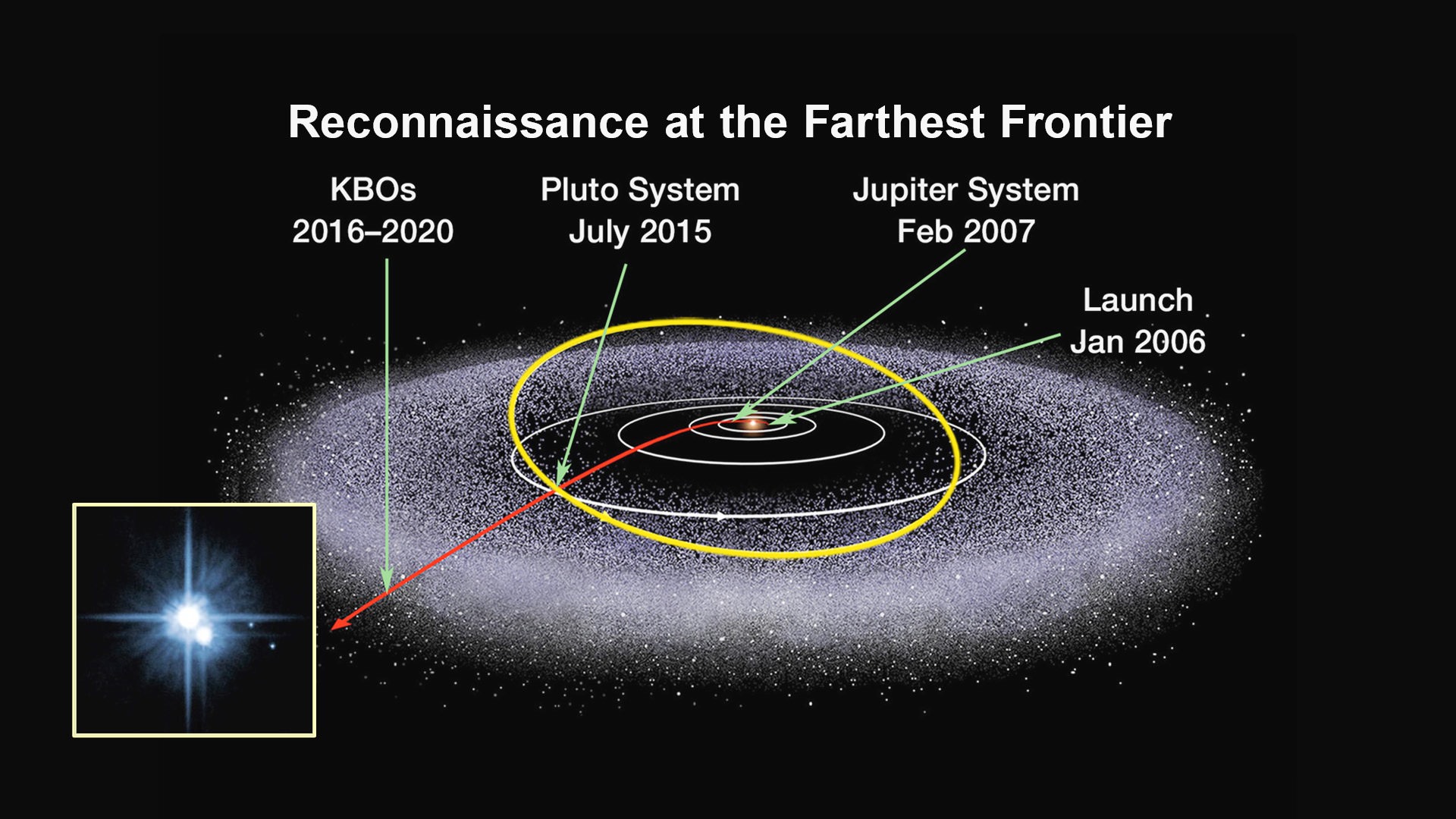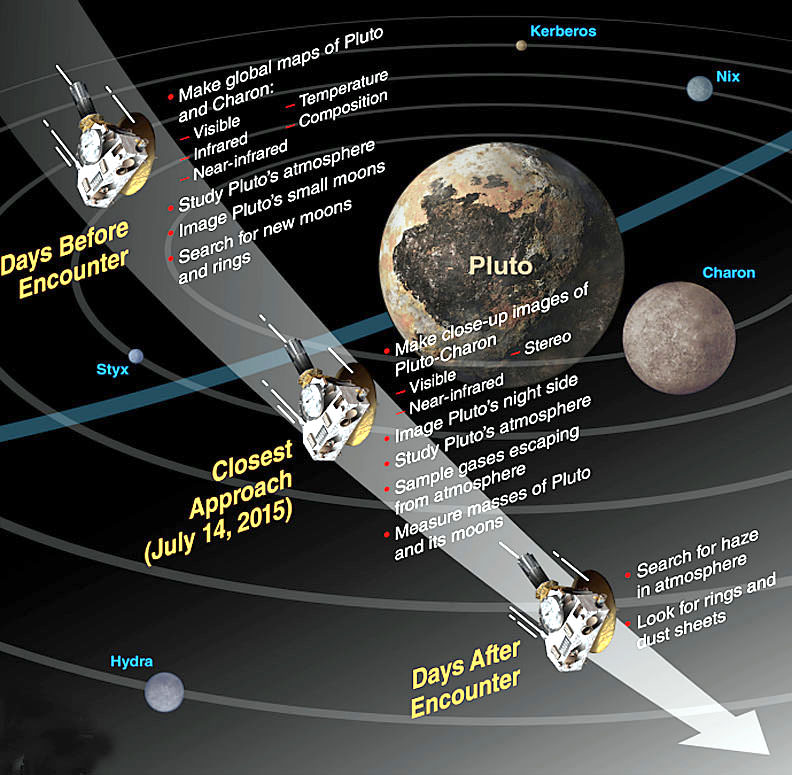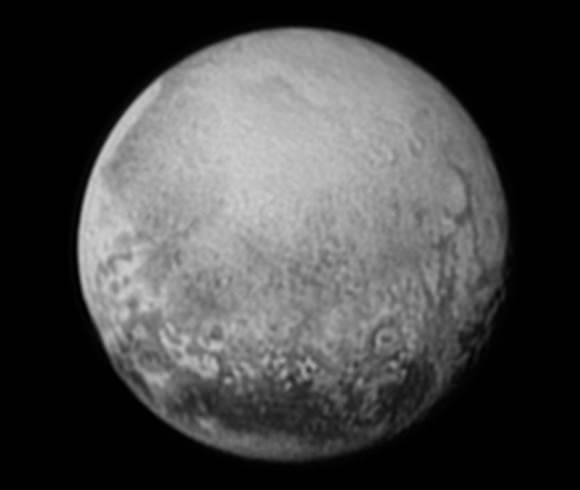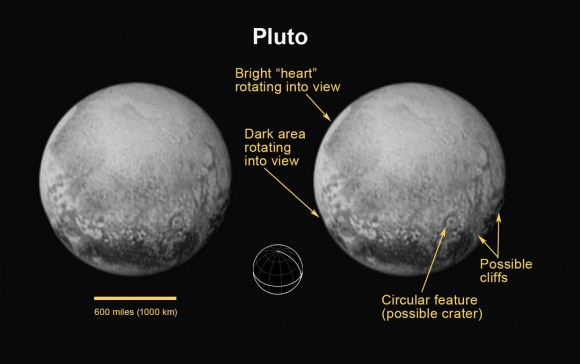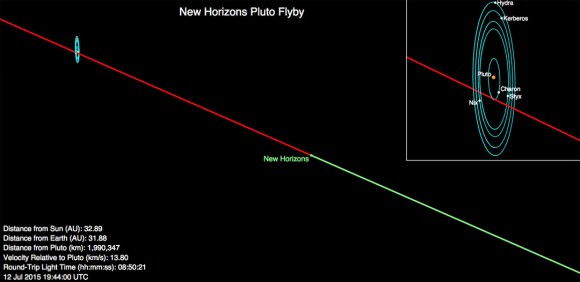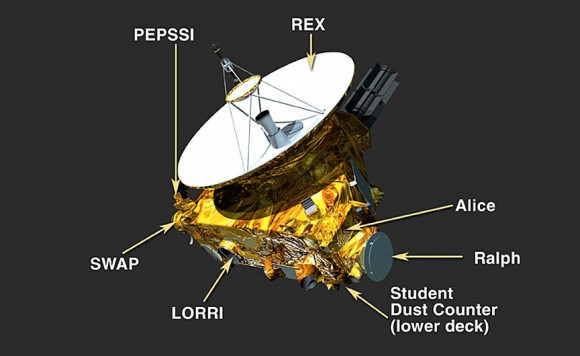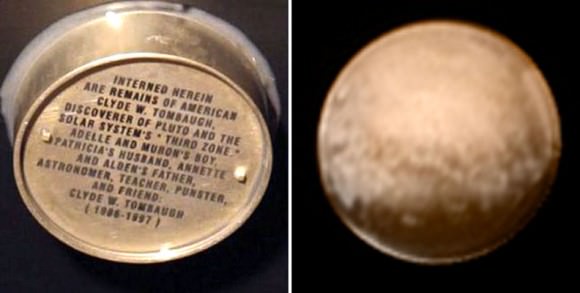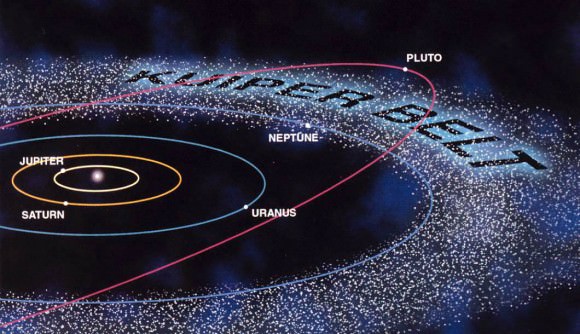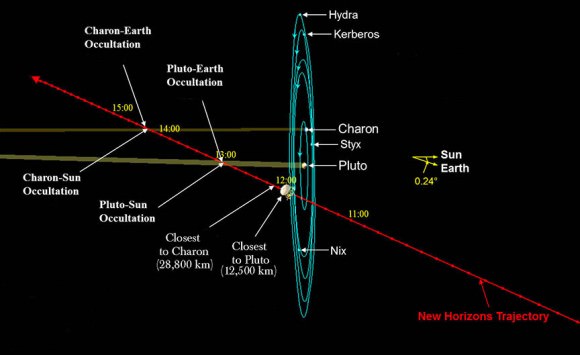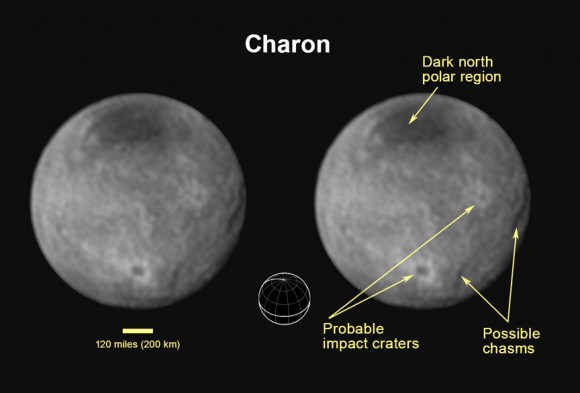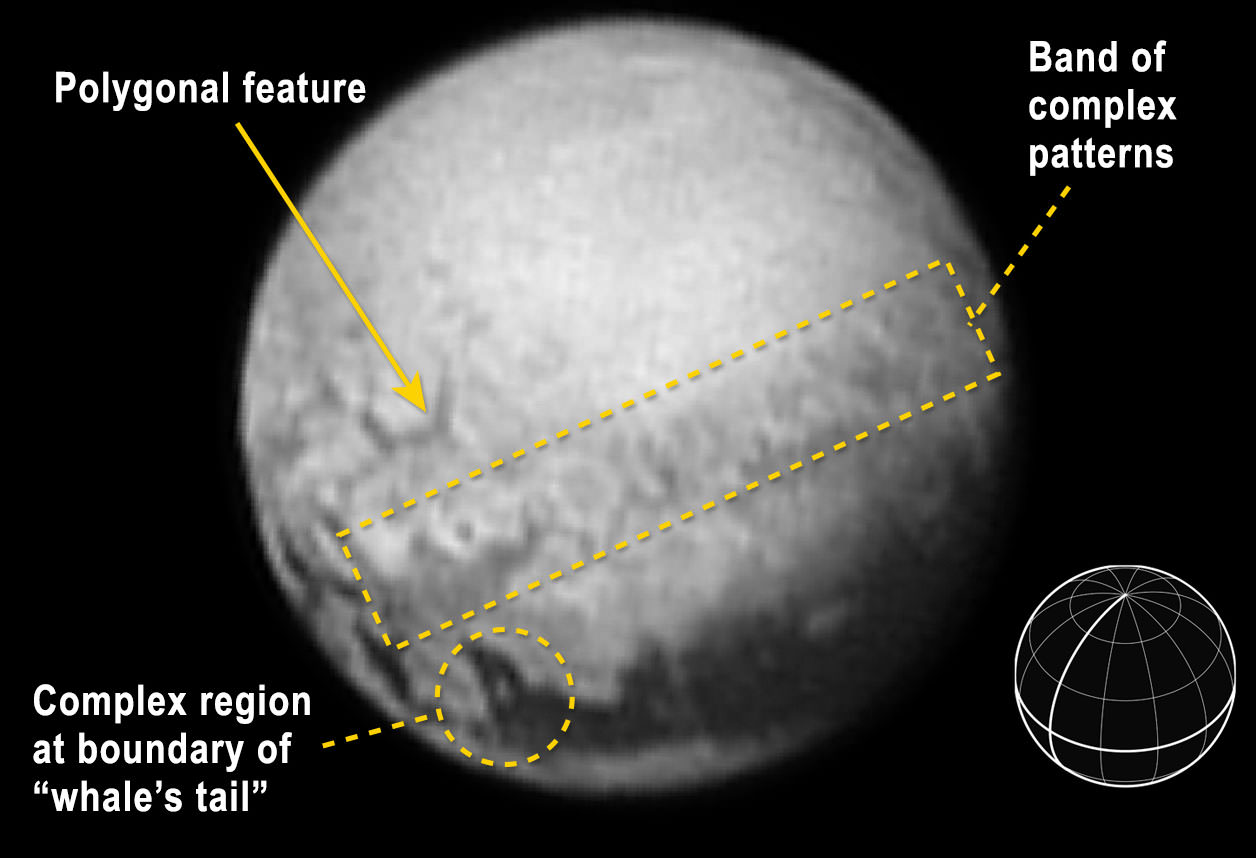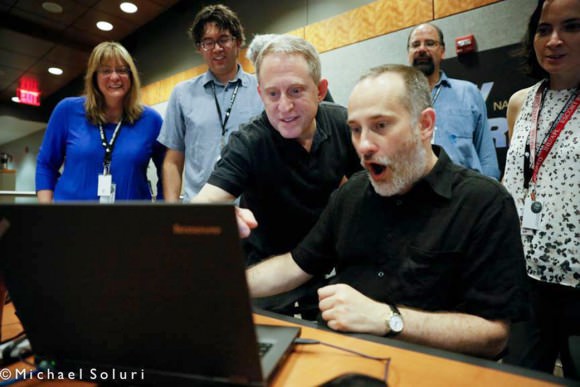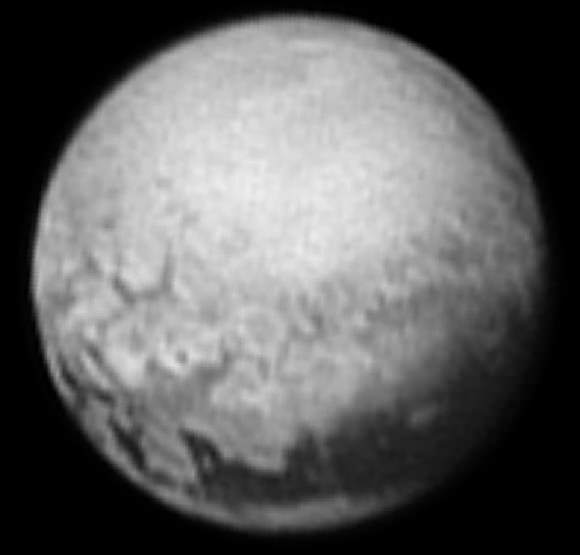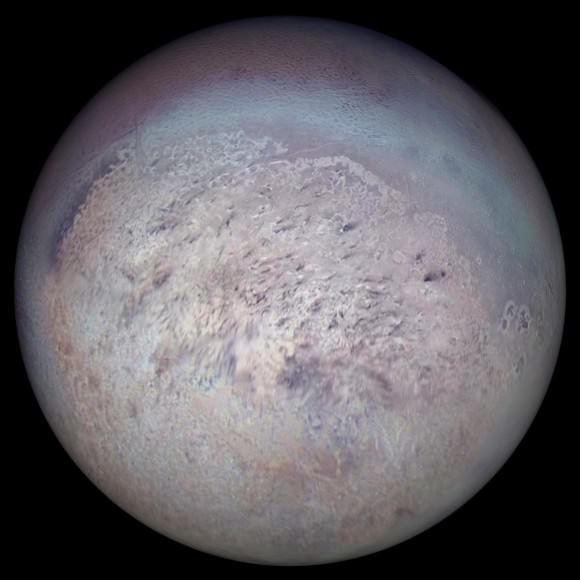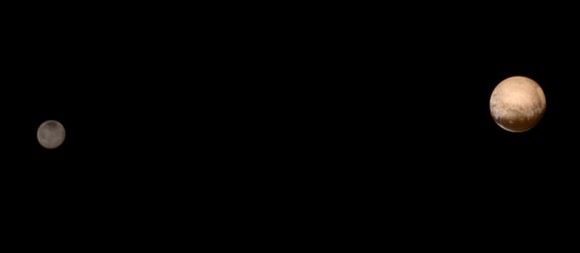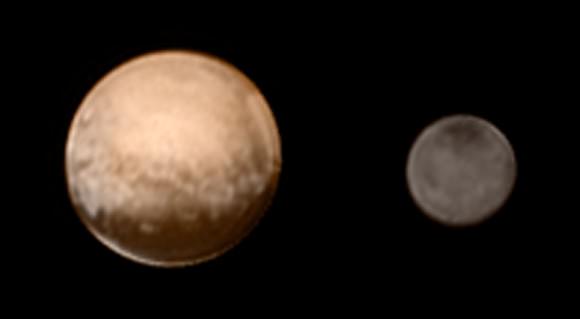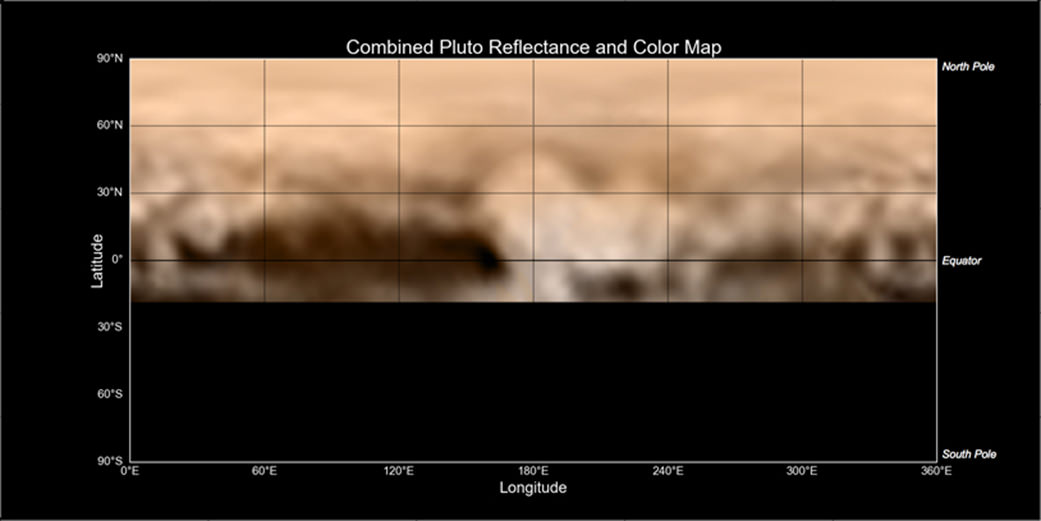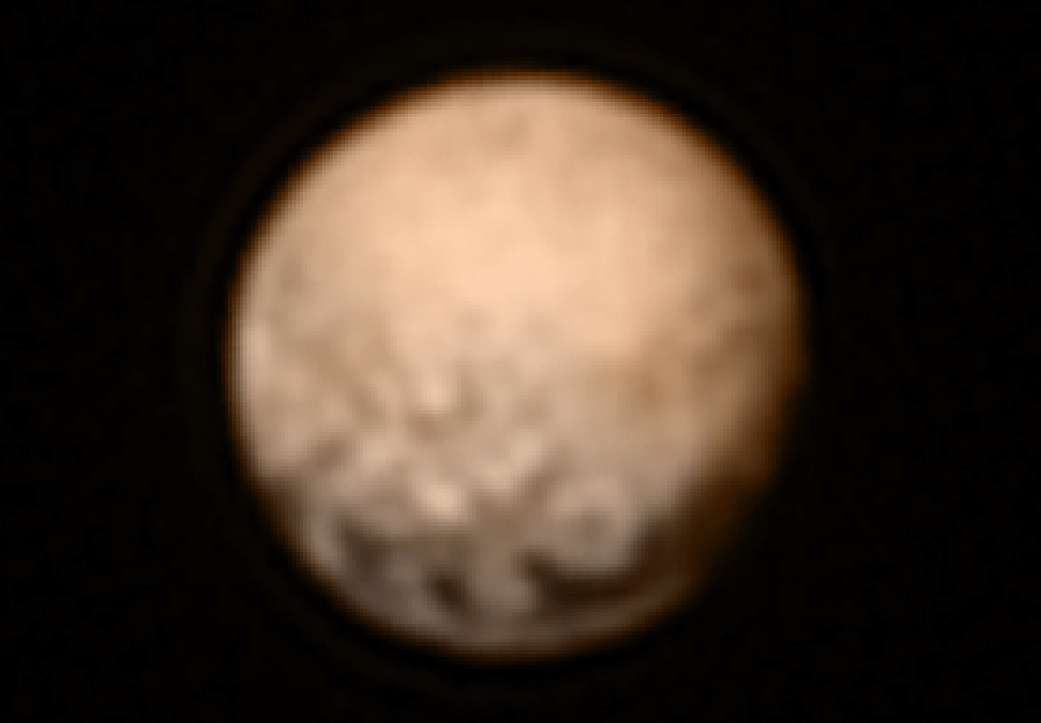New close-up images of a region near Pluto’s equator reveal a giant surprise — a range of youthful mountains rising as high as 11,000 feet (3,500 meters) above the surface of the icy body. Credits: NASA/JHU APL/SwRI
Story/photos expanded[/caption]
APPLIED PHYSICS LABORATORY, LAUREL, MD – Scientists leading NASA’s historic New Horizons mission to the Pluto system announced the first of what is certain to be a tidal wave of new discoveries, including the totally unexpected finding of young ice mountains at Pluto and crispy clear views of young fractures on its largest moon Charon, at a NASA media briefing today (July 15) at the Applied Physics Laboratory (APL) in Laurel, Maryland.
A treasure trove of long awaited data has begun streaming back to Mission Control at Johns Hopkins University Applied Physics Laboratory to the mouth watering delight of researchers and NASA.
With the first ever flyby of Pluto, America completed the initial up close reconnaissance of the planets in our solar system. Pluto was the last unexplored planet, building on missions that exactly started 50 years ago in 1965 when Mariner IV flew past Mars.
“Pluto New Horizons is a true mission of exploration showing us why basic scientific research is so important,” said John Grunsfeld, associate administrator for NASA’s Science Mission Directorate in Washington.
“The mission has had nine years to build expectations about what we would see during closest approach to Pluto and Charon. Today, we get the first sampling of the scientific treasure collected during those critical moments, and I can tell you it dramatically surpasses those high expectations.”
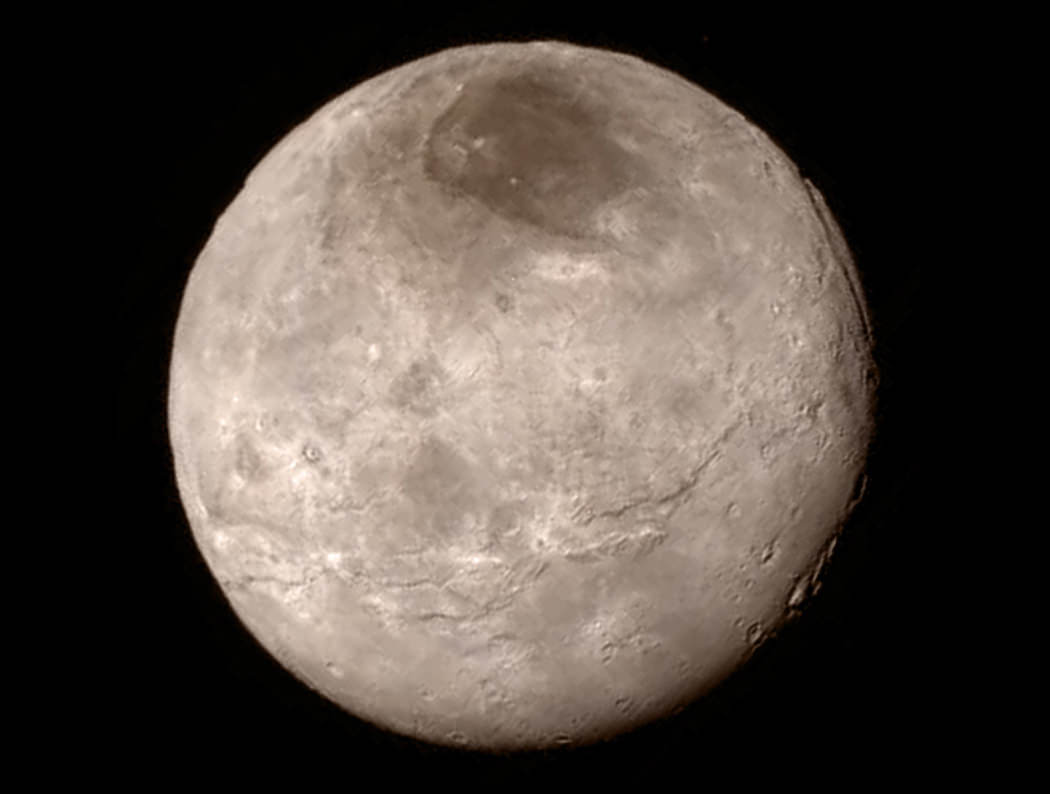
Today the team announced that New Horizons has already made a totally unexpected discovery showing clear evidence of ice mountains on Pluto’s surface in the bright area informally known as the ‘big heart of Pluto.’
The new close-up image released today showed an icy mountain range near the base of the heart with peaks jutting as high as 11,000 feet (3,500 meters) above the surface, announced John Spencer, New Horizons science team co-investigator at the media briefing.
“It’s a very young surface, probably formed less than 100 million years old,’ said Spencer. “It may be active now.”
Spencer also announce that the heart shaped region will now be named “Tombaugh Reggio” in honor of Clyde Tombaugh, the American astronomer who discovered Pluto in 1930.
“We are seeing water ice.”
“I never would have imagined this!” Spencer exclaimed.
“And I’m very surprised that there are no craters in the first high resolution images.”
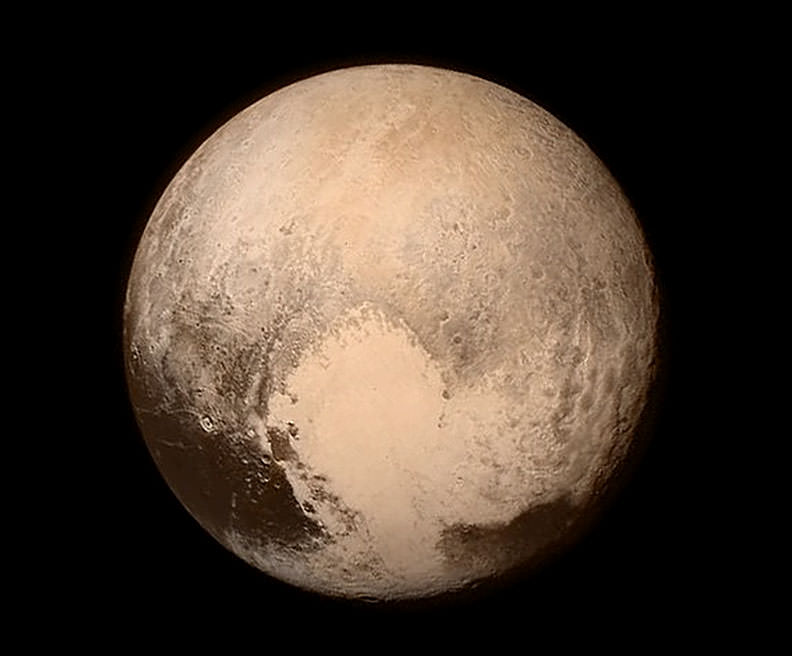
The finding of ice mountains has major scientific implications.
Unlike the icy moons of giant planets, Pluto cannot be heated by gravitational interactions with a much larger planetary body. Some other process must be generating the mountainous landscape, said the team.
“This may cause us to rethink what powers geological activity on many other icy worlds,” says Spencer of SwRI.
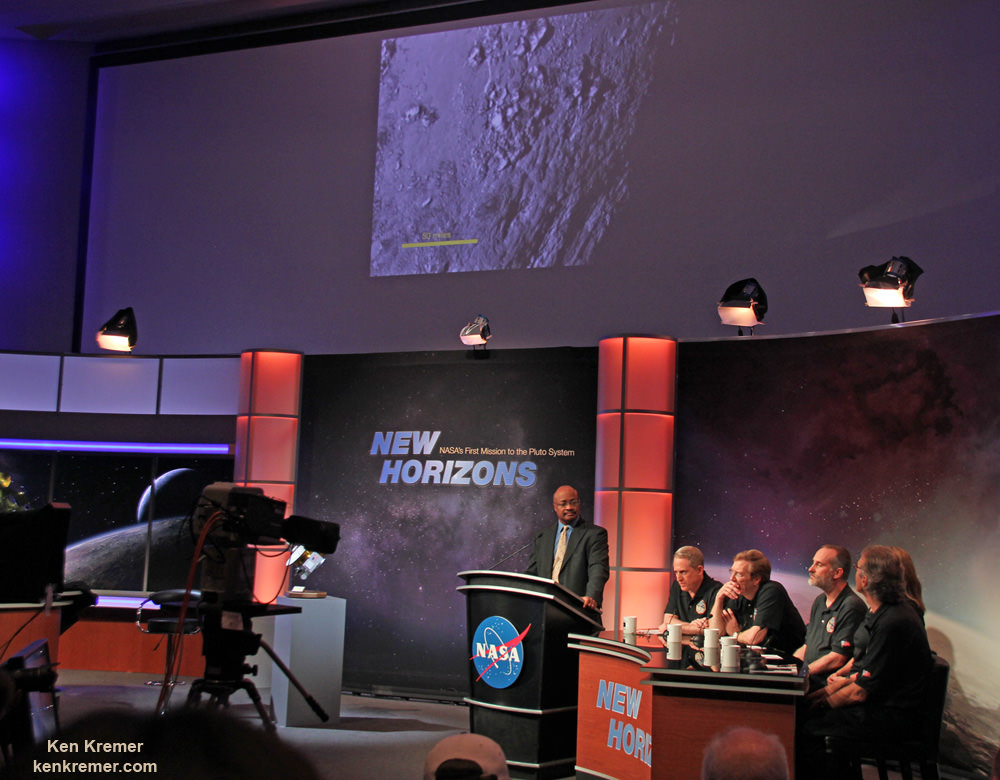
“Pluto may have internal activity. There may be geysers or cryovolcanoes,” New Horizons principal investigator Alan Stern of the Southwest Research Institute, Boulder, Colorado, said during the media briefing. However there is no evidence for them yet.
Additional high resolution images for “Tombaugh Reggio” area are being transmitted back to Earth today and will continue.
“Finding a mountain range of ice is a complete surprise,” Stern noted.
After a nine year voyage through interplanetary space, New Horizons barreled past the Pluto system on Tuesday, July 14 for a history making first ever flyby at over 31,000 mph (49,600 kph), and survived the passage by swooping barely 7,750 miles (12,500 kilometers) above the planet’s amazingly diverse surface.
The team had to wait another 12 hours for confirmation that the spacecraft lived through the daring encounter when signals were reacquired as planned at 8:53 p.m. EDT last night. Since New Horizons swung past Pluto to continue its voyage, the probe is now more than million miles outbound just 24 hours later.
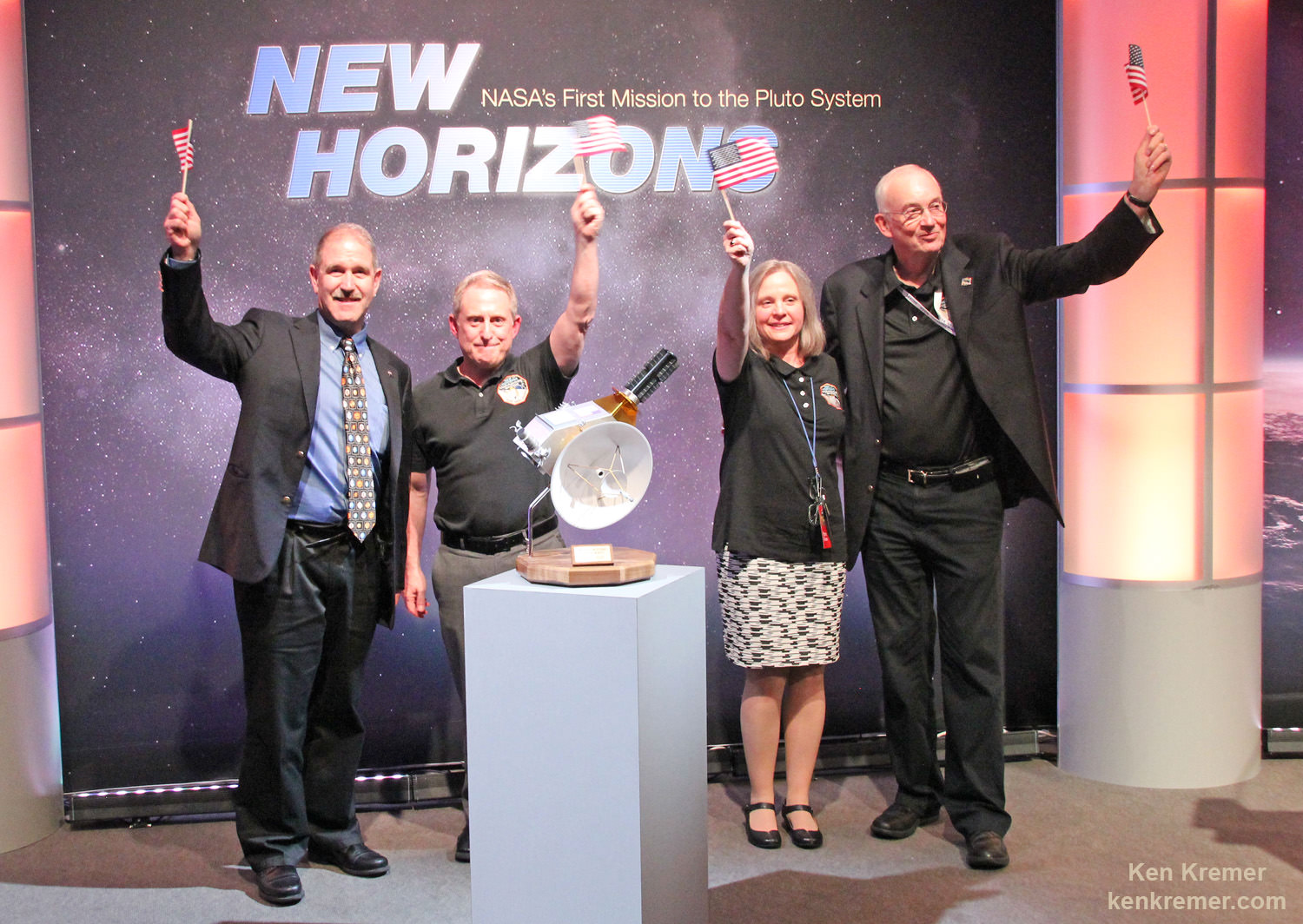
The New Frontiers spacecraft was built by a team led by Stern and included researchers from SwRI and the Johns Hopkins University Applied Physics Laboratory (APL) in Laurel, Maryland. APL also operates the New Horizons spacecraft and manages the mission.
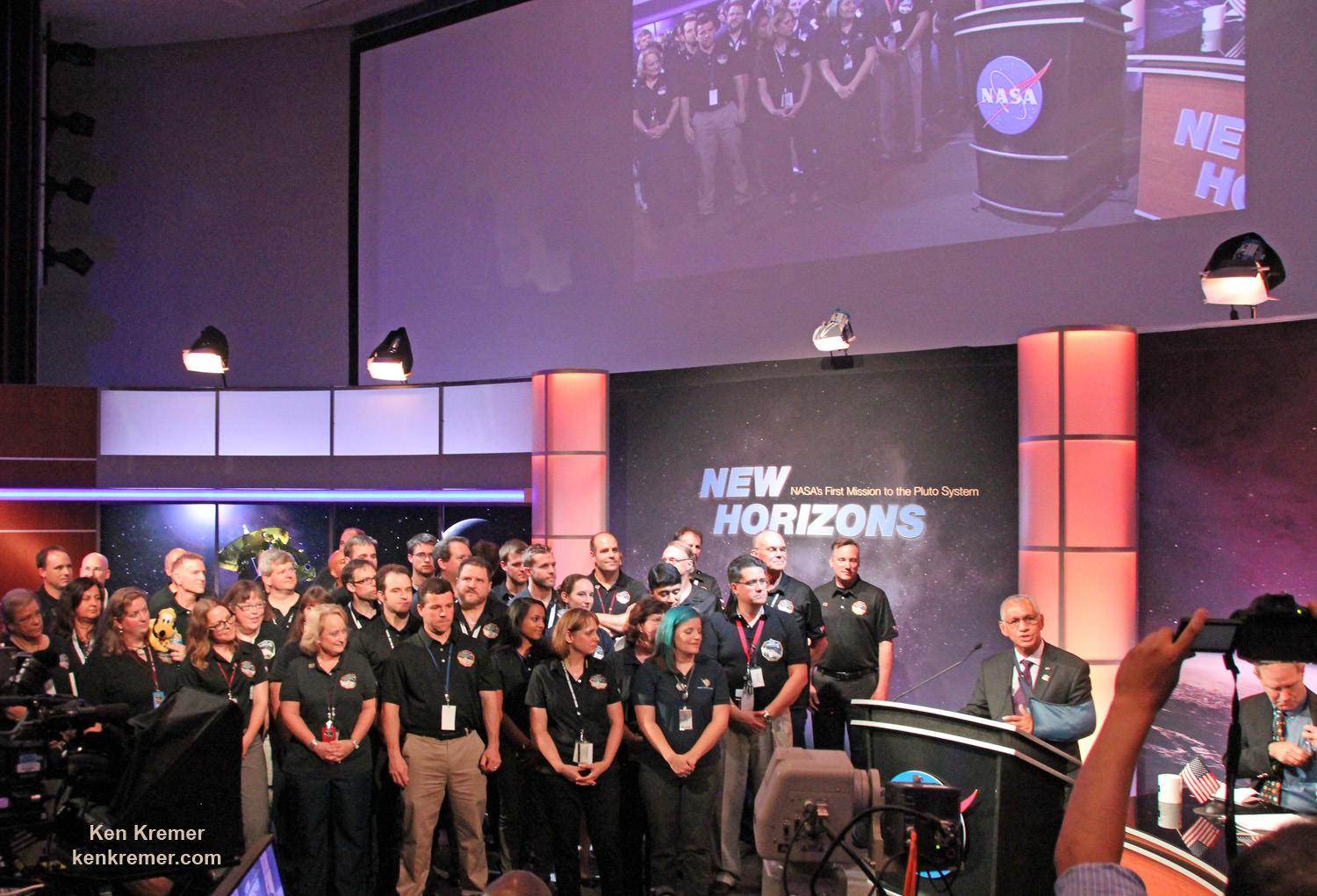
Watch for Ken’s continuing onsite coverage of the Pluto flyby on July 14 from the Johns Hopkins University Applied Physics Laboratory (APL).
Stay tuned here for Ken’s continuing Earth and planetary science and human spaceflight news.
